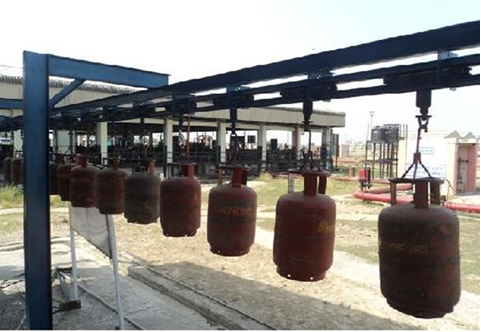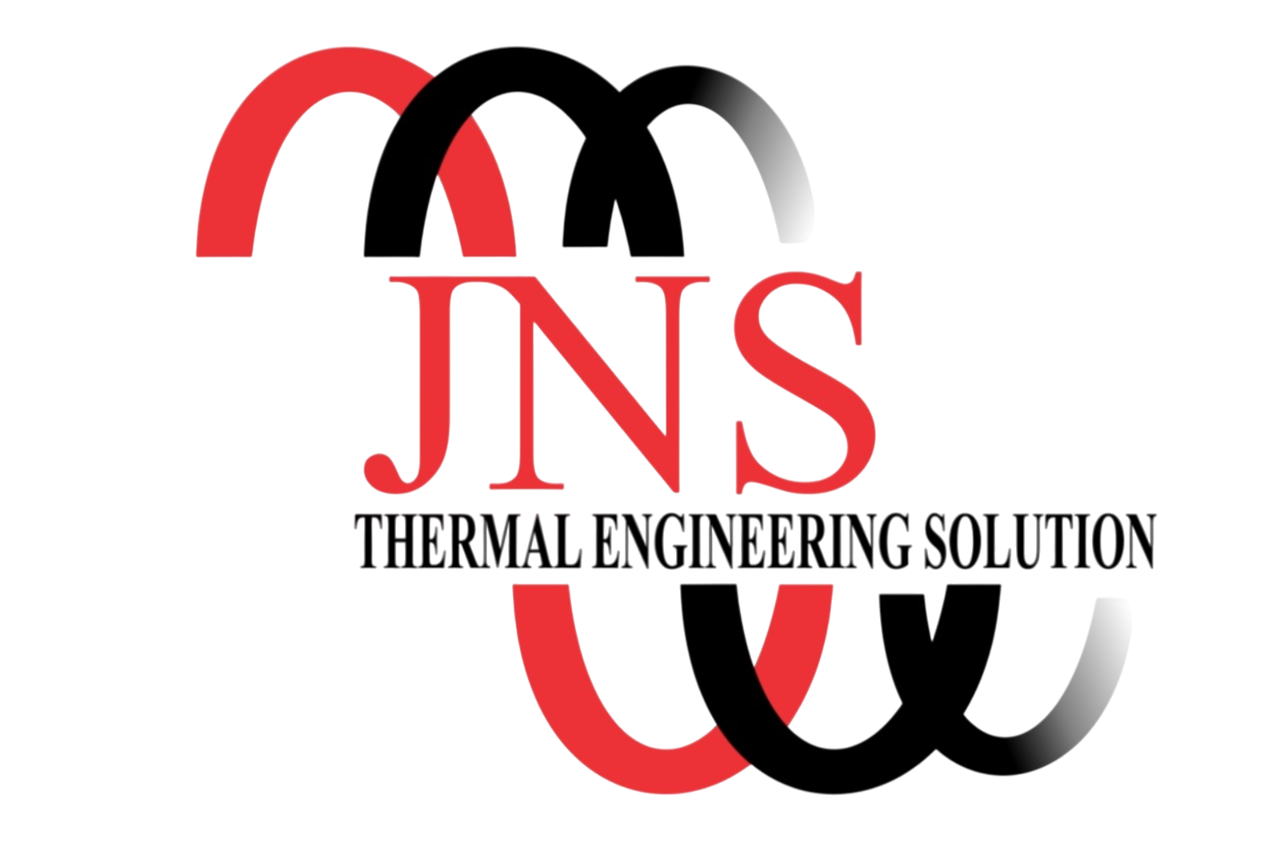
LPG Cylinder Plant & Machinery
We design, manufacture, and install complete LPG cylinder manufacturing units that comply with the highest safety and quality standards. Our solutions ensure durability, efficiency, and seamless plant operation.
At JNS Heats, we deliver complete turnkey solutions for LPG Cylinder Plants — from raw material preparation to final inspection.
Our process ensures safety, precision, and compliance with BIS, ISO, and PESO standards.
Step-by-Step Process
1. Plate Cutting & Blanking
The process begins with high-quality steel plates (generally carbon steel) that meet
required tensile and chemical properties.
Using CNC shearing machines, these plates are cut and shaped into circular blanks with
exact dimensions.
This stage ensures uniformity in raw material size, which is critical for the deep
drawing process that follows.
Proper alignment and clean cutting edges help achieve a high-quality cylinder with
minimum material wastage.
2. Deep Drawing & Forming
At vero eos et accusamus et iusto odio dignissimos ducimus qui blanditiis
Each circular blank is fed into hydraulic deep drawing presses, which form the top and
bottom halves (dome and base) of the cylinder.
The operation is performed in multiple draws to avoid metal thinning or cracking.
This step gives the cylinder its basic shape, maintaining uniform wall thickness and
excellent mechanical strength.
Precision control during this stage ensures that every cylinder maintains exact
curvature and volume capacity.
3. Trimming & Beading
After deep drawing, the formed shells undergo trimming to remove extra edges and ensure
perfect circular alignment.
The next operation, beading, adds a reinforced ridge around the edges of the cylinder
halves.
This bead not only provides mechanical strength but also acts as a guide during
welding.
Proper trimming and beading ensure that both halves fit seamlessly during the assembly
stage.
3a. Foot Ring Preparation
Foot rings are fabricated from rolled strip or drawn blanks, machined or formed to precise diameter and height, and prepared with any required mounting holes or chamfers. Surface preparation (deburring, shot-blast) ensures a clean contact area for welding and secure fit on the lower half.
3b. Top Ring / Protective Shroud Preparation
Top rings or protective shrouds (which support the valve assembly and protective collar) are shaped, flattened, and dimensioned to match the neck profile of the upper half. Where required, top rings are pre-machined for valve seating, lug features, or locking grooves and cleaned for welding.
4. Ring Joining — Foot Ring to Lower Half & Top Ring to Upper Half
Foot Ring Join (Lower Half): The prepared foot ring is accurately positioned on the lower shell. It is tack-welded for alignment, then fully seam-welded (automatic or manual welding as per design) around the circumference. Welds are inspected (visual and NDT) to ensure full penetration and structural stability so the cylinder stands securely and absorbs impacts.
Top Ring Join (Upper Half): The top ring/shroud is fitted to the upper dome. After tack welding and alignment checks, final seam welding secures the shroud to the neck area. This joint is critical because it supports the valve, safety collar, and protects the cylinder during handling.
Both ring joins undergo dimensional checks and non-destructive testing (e.g., dye-penetrant or ultrasonic) to verify weld integrity and leak-free performance.
5. Welding & Final Assembly
The top and bottom halves are positioned together and circumferentially welded using
automatic MIG or TIG seam welding machines for strong, uniform joints.
Subsequently, foot rings and neck rings are welded onto the cylinder body.
The foot ring ensures stability when placed upright, while the neck ring supports the
valve assembly and protective collar.
Every welding operation undergoes non-destructive testing (NDT) to confirm weld
integrity and prevent leaks or weak joints.
6. Heat Treatment
Once assembled, the cylinders are placed in a continuous or batch-type furnace for heat
treatment (normalizing or stress relieving).
This process eliminates internal stresses caused during forming and welding.
Proper heat treatment improves ductility, toughness, and impact resistance, ensuring
long-term durability under high pressure.
Our energy-efficient furnaces are designed to maintain accurate temperature profiles for
consistent metallurgical results.
7. Hydrostatic & Pneumatic Testing
After heat treatment, each cylinder undergoes hydrostatic pressure testing — filled with
water and pressurized to a specific level (usually 2.5 times its working pressure) to
check for leaks, deformation, or weakness.
Following hydrostatic testing, pneumatic (air) testing is performed to ensure there are
no gas leaks.
Only cylinders that successfully pass both tests proceed to the next stage.
This phase guarantees 100% safety and reliability of every unit produced.
8. Shot Blasting & Painting
The tested cylinders are then cleaned and surface-treated through shot blasting,
removing scale, rust, and impurities.
After cleaning, a layer of primer and anti-corrosive paint is applied, followed by a
final top coat in customer-specified colors.
The painting process not only enhances the appearance but also protects against
corrosion and environmenttal wear, extending the cylinder’s service life.
9. Valve Fitting & Final Inspection
Once painting is complete, valves and safety caps are installed according to design
standards.
Every cylinder undergoes a final inspection, which includes checking weight, dimensions,
weld quality, valve fitting, and surface finish.
Approved cylinders are embossed or laser-marked with batch details, manufacturer’s
identification, and certification marks before packaging.
The finished product is ready for dispatch, fully compliant with regulatory and safety
requirements.
JNS Heats combines engineering expertise and automation to build safe, reliable, and cost-effective LPG cylinder manufacturing systems — trusted by industries worldwide.








